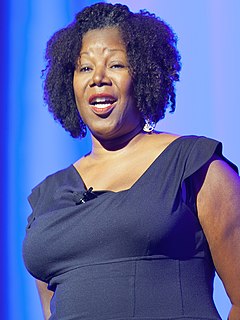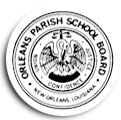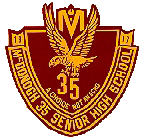
The civil rights movement was a political movement and campaign from 1954 to 1968 in the United States to abolish institutional racial segregation, discrimination, and disenfranchisement throughout the United States. The movement had its origins in the Reconstruction era during the late 19th century, although it made its largest legislative gains in the 1960s after years of direct actions and grassroots protests. The social movement's major nonviolent resistance and civil disobedience campaigns eventually secured new protections in federal law for the civil rights of all Americans.

Ruby Nell Bridges Hall is an American civil rights activist. She was the first African-American child to desegregate the all-white William Frantz Elementary School in Louisiana during the New Orleans school desegregation crisis on November 14, 1960. She is the subject of a 1964 painting, The Problem We All Live With by Norman Rockwell.

Jo Ann Gibson Robinson was an activist during the Civil Rights Movement and educator in Montgomery, Alabama.

The Nashville sit-ins, which lasted from February 13 to May 10, 1960, were part of a protest to end racial segregation at lunch counters in downtown Nashville, Tennessee. The sit-in campaign, coordinated by the Nashville Student Movement and the Nashville Christian Leadership Council, was notable for its early success and its emphasis on disciplined nonviolence. It was part of a broader sit-in movement that spread across the southern United States in the wake of the Greensboro sit-ins in North Carolina.

McDonogh School is a private, coeducational, PK-12, college-preparatory school founded in Owings Mills, Maryland, United States in 1873. The school is named after John McDonogh, whose estate originally funded the school. The school now enrolls approximately 1,300 students, between 90 and 100 of whom participate in the Upper School's five-day boarding program. McDonogh employs approximately 177 full-time faculty members, more than 80% of whom hold advanced degrees and 20% of whom live on-campus.

John McDonogh was an American entrepreneur whose adult life was spent in south Louisiana and later in Baltimore. He made a fortune in real estate and shipping, and as a slave owner, he supported the American Colonization Society, which organized transportation for freed people of color to Liberia. He had devised a manumission scheme whereby the people he held as enslaved could "buy" their own freedom, which took them some 15 years. In his will he provided large grants for the public education of children of poor whites and freed people of color in New Orleans and Baltimore, and by the 1970s some 20 schools in the New Orleans public school system were named for him.

The Orleans Parish School Board (OPSB) governs the public school system that serves New Orleans, Louisiana. It includes the entirety of Orleans Parish, coterminous with New Orleans.
Avery Caesar Alexander was a Louisiana civil rights leader and politician. He graduated from Union Baptist Theological Seminary and was ordained into the Baptist ministry in 1944. He was elected to the Louisiana House of Representatives as a Democrat in 1975 and served in that office until his death.

The McDonogh Three is a nickname for the three African-American girls, who, at the age of six, were the first black students to integrate an all-white school in New Orleans. Leona Tate, Tessie Prevost, and Gail Etienne lived in the 9th Ward of New Orleans, a neighborhood where black and white people lived separately by block. Even though segregated schools had been illegal since the Brown v. Board of Education case in 1954, no states in the American South had taken action to integrate their schools. Leona Tate, Gail Etienne, and Tessie Prevost had all attended the black-only schools in their neighborhood, until November 14, 1960, when they arrived at a previously all-white segregated school called McDonogh No. 19. On the same day, another six-year-old African-American girl named Ruby Bridges integrated a second New Orleans public school called William Frantz Elementary.
Freedom Schools were temporary, alternative, and free schools for African Americans mostly in the South. They were originally part of a nationwide effort during the Civil Rights Movement to organize African Americans to achieve social, political and economic equality in the United States. The most prominent example of Freedom Schools was in Mississippi during the summer of 1964.

McDonogh 35 Senior High School is a charter public high school in New Orleans, Louisiana. It is a part of New Orleans Public Schools and InspireNOLA charter operator. The school was named after John McDonogh.

The New York City teachers' strike of 1968 was a months-long confrontation between the new community-controlled school board in the largely black Ocean Hill–Brownsville neighborhoods of Brooklyn and New York City's United Federation of Teachers. It began with a one day walkout in the Ocean Hill-Brownsville school district. It escalated to a citywide strike in September of that year, shutting down the public schools for a total of 36 days and increasing racial tensions between Blacks and Jews.

The New Orleans school desegregation crisis was a period of intense public resistance in New Orleans following the 1954 U.S. Supreme Court ruling in Brown v. Board of Education that racial segregation of public schools was unconstitutional. The conflict peaked in 1960, when U.S. Circuit Judge J. Skelly Wright ordered that desegregation in New Orleans begin on November 14 of that year.
This is a timeline of the civil rights movement in the United States, a nonviolent mid-20th century freedom movement to gain legal equality and the enforcement of constitutional rights for people of color. The goals of the movement included securing equal protection under the law, ending legally institutionalized racial discrimination, and gaining equal access to public facilities, education reform, fair housing, and the ability to vote.
George T. Raymond was an American civil rights leader from Pennsylvania who served as president of the Chester, Pennsylvania branch of the National Association for the Advancement of Colored People (NAACP) from 1942 to 1977. He was integral in the desegregation of businesses, public housing and schools in Chester and co-led the Chester school protests in 1964 which made Chester a key battleground in the civil rights movement.
Stanley E. Branche was an American civil rights leader from Pennsylvania who worked as executive secretary in the Chester, Pennsylvania branch of the National Association for the Advancement of Colored People (NAACP) and founded the Committee for Freedom Now (CFFN).

The New York City school boycott, referred to as Freedom Day, was a large-scale boycott and protest against segregation in the New York City public school system which took place on February 3, 1964. Students and teachers walked out to highlight the deplorable conditions at public schools in the city, and demonstrators held rallies demanding school integration. It has been described as the largest civil rights protest of the 1960s, involving nearly half a million participants.
The Chester school protests were a series of demonstrations that occurred from November 1963 through April 1964 in Chester, Pennsylvania. The demonstrations focused on ending the de facto segregation that resulted in the racial categorization of Chester public schools, even after the landmark Supreme Court case Brown v. The Board of Education of Topeka (1954). The racial unrest and civil rights protests were led by Stanley Branche of the Committee for Freedom Now (CFFN) and George Raymond of the National Association for the Advancement of Colored Persons (NAACP).
The Committee for Freedom Now (CFFN) was an American civil rights organization in Chester, Pennsylvania, that worked to end de facto segregation and improve the conditions at predominantly black schools in Chester. CFFN was founded in 1963 by Stanley Branche along with the Swarthmore College chapter of Students for a Democratic Society and Chester parents. From November 1963 to April 1964, CFFN and the Chester chapter of the NAACP, led by George Raymond, initiated the Chester school protests which made Chester a key battleground in the civil rights movement.

A bust of John McDonogh was installed in New Orleans, Louisiana, United States in 1938, as part of the Federal Art Project. It was created by Angela Gregory, a New Orleans native, and was erected at what was designated "McDonogh Place", a small park in Uptown New Orleans at St. Charles Avenue and Toledano Street. In 1958, it was moved to Duncan Plaza by the new City Hall. The artwork was surveyed by the Smithsonian Institution's "Save Outdoor Sculpture!" program in 1993.













